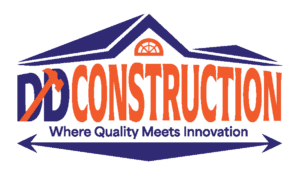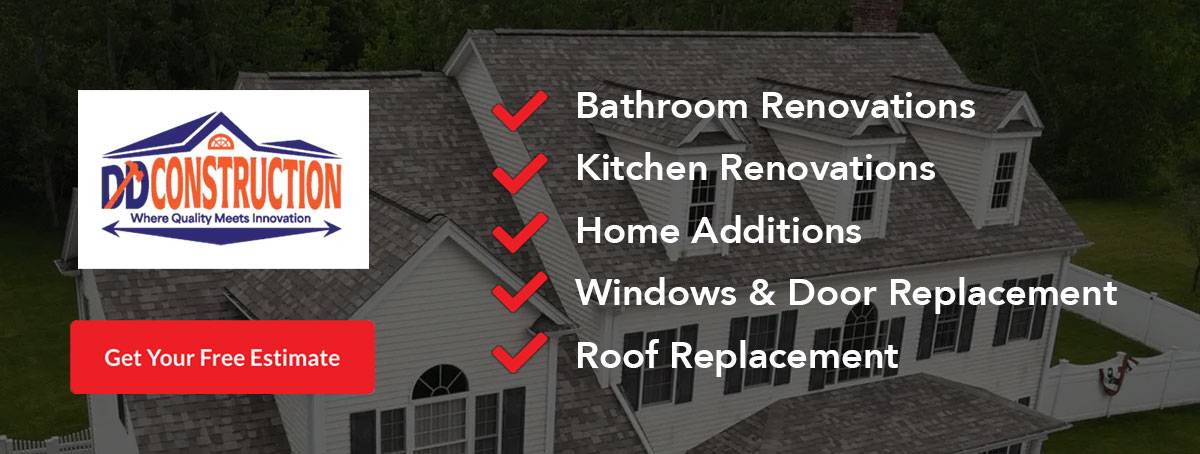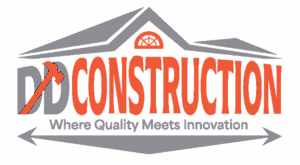Emergency Roof Repair in Massachusetts: What to Do After a Storm for Fast, Reliable Roof Contractor Services
Introduction Massachusetts homeowners face unique challenges when severe storms strike, often causing extensive roof damage. In the aftermath of a storm, assessing roof damage is critical to prevent further harm and minimize long-term repair costs. High winds, heavy rain, and hail can compromise a roof’s structure, leading to leaks, water damage, and even complete failure. Fast, reliable emergency roof repair services, as recommended by ddconstructionma.com, are essential to maintain home integrity and ensure your family’s safety. This guide explains how to assess roof damage after a storm, details both temporary and permanent repair solutions, advises on choosing the right roofing contractor, and outlines the insurance claims process. Homeowners will learn to recognize common storm damage signs, conduct safe inspections, and know when to call in professionals.
The guide aims to help homeowners quickly identify damage and take prompt action while offering insights into restorative solutions that prevent future issues. The advice is based on practical experience from expert roofers familiar with Massachusetts’ weather conditions and building codes. Detailed tips include handling emergency repairs, selecting quality materials, and filing an insurance claim. For those investing in long-term repairs, this article explains how to meet local building codes and choose contractors who deliver high-quality workmanship.
By the end of this guide, Massachusetts homeowners will understand the emergency roof repair process from initial damage assessment to final restoration, protecting their investment and enhancing home safety.
How Do You Assess Roof Damage After a Storm in Massachusetts?
Start with a careful visual inspection from the ground using binoculars to spot obvious and hidden issues. Look for missing or displaced shingles, broken flashing, and debris that may hide underlying leaks. Note that storm damage varies with storm intensity. In Massachusetts, common damage includes shingles blown off by high winds, water damage from heavy rains or hail, and broken seals around vents and chimneys. Document every visible fault, such as areas where granules have washed off, which weaken the shingles over time.
Create a detailed log or checklist noting the condition of roof flashing, gutters, downspouts, and any cracks or splits. This documentation is vital for discussions with roofing contractors and insurance adjusters. Additionally, watch for interior signs like water stains on ceilings or peeling paint, which indicate severe damage.
Also, inspect attics for dark spots, mold, or damp insulation that may indicate internal damage despite an intact exterior. For safety, avoid climbing on a wet or compromised roof. Instead, use professional equipment or schedule a professional inspection. Always use protective gear if handling any debris.
What Are the Immediate Emergency Roof Repair Solutions Available?

Emergency roof repair solutions provide temporary measures to protect your home until permanent repairs are completed. Common temporary fixes include roof tarping, sealing breaches with high-performance adhesives, and replacing damaged flashing. These methods are designed for speed and protection.
Roof tarping involves securely covering the damaged area with heavy-duty tarps and specialized anchors to create a barrier against rain, wind, and debris. In addition, roof sealants can close gaps to slow or stop leaks. Emergency patch kits, which may include flexible roof membranes or adhesive-backed patches, work well on small, isolated breaches around vents or chimneys. In more severe cases, plywood can be used to cover larger damaged areas, combined with a waterproofing membrane.
It is essential to document every temporary repair with photographs and detailed notes to support your insurance claim. Remember that temporary fixes are not substitutes for permanent repairs; a professional evaluation is needed to plan the long-term solution that also complies with Massachusetts building codes.
How Do You Choose the Right Roofing Contractor in Massachusetts for Emergency Repairs?
Selecting a reputable and experienced roofing contractor is critical for both emergency and permanent repairs. Begin by researching local roofing companies and verifying they hold the necessary certifications, licenses, and insurance (worker’s compensation and general liability) required by Massachusetts regulations.
Focus on contractors with experience in storm damage repair and positive customer reviews. Ask for references or case studies that demonstrate their success in handling similar issues. It is important to interview potential contractors to confirm their familiarity with emergency repair methods, safety protocols, and cleanup processes. Transparent communication regarding repair timelines, costs, warranties, and insurance claim assistance is essential.
Additionally, check with the Better Business Bureau (BBB) and local consumer agencies to verify a contractor’s reputation. Comparing multiple bids can help balance cost with quality; avoid choosing the cheapest option if it compromises repair standards.
How Do You File an Insurance Claim for Storm-Damaged Roof Repairs in Massachusetts?

Filing an insurance claim for roof damage requires careful documentation and prompt action. Immediately contact your insurance provider after securing emergency repairs. Provide detailed documentation such as photographs, repair estimates, and a repair log; keep copies of all communications with the adjuster.
Typically, an insurance adjuster will inspect the property to verify the damage based on your documentation. It is advisable to work with a reputable roofing contractor who can provide accurate, itemized repair estimates and assist in communicating with the insurer. Understanding policy terms such as “deductible,” “actual cash value,” and “replacement cost” is critical. Review your policy carefully and consider consulting an independent agent or public adjuster if needed.
Communication throughout the claims process is key. Follow up regularly, and once approved, review the payout terms to ensure they match the repair costs. A collaborative approach with your contractor and insurer will help expedite the claim process.
Below is a quick reference table summarizing the key steps involved:
| Step | Documentation Needed | Key Insurance Term | Benefit |
|---|---|---|---|
| 1. Notify Insurer | Photos, Written Report | Claim Notification | Prompt processing |
| 2. Initial Inspection | Damage Checklist, Videos | Adjuster Visit | Accurate damage evaluation |
| 3. Contractor Estimate | Detailed Estimate, Photos | Replacement Cost | Ensures proper payout |
| 4. Review Policy | Policy Document, Exclusions | Deductible | Clear financial expectations |
| 5. Final Approval | Signed Estimates, Receipts | Claim Settlement | Smooth reimbursement |
What Are the Permanent Roof Repair Options After a Storm in Massachusetts?
Permanent roof repair involves restoring your roof to full functionality while meeting local building codes and high-quality standards. This process may include replacing compromised decking, repairing or replacing damaged flashing, and ensuring all joints and penetrations are properly sealed. The chosen repair solution should integrate well with the overall roofing system to protect against future storms.
Selecting the correct roofing materials is crucial. Popular choices in Massachusetts include asphalt shingles, GAF Master Elite products, and slate. Asphalt shingles are cost-effective and easy to install, while slate offers superior durability and a unique aesthetic. Work with a professional roofing contractor to decide which material meets your budget, architectural style, and performance needs.
Permanent repairs must fully comply with Massachusetts building codes, ensuring proper insulation, waterproofing, and ventilation. Hiring experienced contractors with proven workmanship minimizes the risk of recurring issues. Always obtain a detailed written contract outlining the scope of work, timelines, and warranty information for both labor and materials. A quality repair not only restores your roof but also enhances energy efficiency, curb appeal, and property value.
How Can Homeowners Prevent Future Storm Damage to Their Roofs?

Long-term prevention of storm damage requires routine maintenance, strategic upgrades, and active monitoring. Schedule annual inspections—preferably in spring or fall—to identify initial signs of damage. Regular maintenance tasks, such as cleaning gutters, replacing damaged shingles, and sealing leaks, help extend the roof’s lifespan and prevent severe issues during storms.
Consider upgrading to storm-resistant roofing materials. Advances in roofing technology now offer high-quality asphalt shingles, metal roofing systems, and slate that are engineered to withstand high winds and heavy precipitation. Upgraded roofs often come with longer warranties and reduce the frequency of maintenance needs, ultimately lowering long-term repair costs.
Additional preventive measures include reinforcing roof structures with extra insulation and installing secondary water barriers like ice and water shield membranes. These steps protect vulnerable areas and help manage moisture intrusion. Establishing a regular maintenance schedule with both seasonal inspections and professional evaluations will ensure that minor issues do not evolve into hazardous problems.
Investing in complementary exterior improvements—such as energy-efficient windows and enhanced siding—also boosts overall home resilience and curb appeal.
Where Can You Find Emergency Roof Repair Services in Specific Massachusetts Cities?
Reliable emergency roof repair services are available throughout Massachusetts. In major cities such as Boston, Worcester, and Springfield, many reputable roofing companies offer rapid response times and comprehensive repair solutions. These services are often advertised in local directories, online review platforms, and through community recommendations. It is wise to have a list of pre-vetted contractors on hand for emergencies.
For example, in Boston, many companies specialize in both residential and commercial repairs and often use advanced materials like GAF Master Elite products. In Worcester and Springfield, established contractors offer emergency services with flexible scheduling. Local regulations may affect repair services, so ensure the chosen contractor complies with all state and city standards.
A few recommended service providers include:
- Boston Roof Experts – Rapid emergency services in urban settings with free quotes and comprehensive inspections.
- Worcester Storm Repair – Known for excellent customer service and advanced repair solutions.
- Springfield Roof Solutions – Offers 24/7 emergency roof repair with a strong reputation for quality workmanship.
- Cape Cod Roofing Specialists – Experts on coastal storm impacts with specialized repair techniques.
- Newton Reliable Roofers – Combines local expertise and technology to provide fast, long-term solutions.
- Pittsfield Roofing Pros – Provides both emergency fixes and permanent repairs while ensuring code compliance.
- Braintree Roof Repair Services – Known for quick turnaround times and competitive pricing along with quality customer care.
Verifying certifications, reading reviews, and confirming insurance coverage are vital steps to ensure you select a service provider who meets high industry standards.
Frequently Asked Questions
Q: How quickly should I call a roofing contractor after a storm? A: Call a qualified roofing contractor as soon as possible after a storm, especially if you see visible damage or interior leaks. Quick action can reduce further damage and assists in building a strong insurance claim.
Q: What should I look for during a ground-level roof inspection post-storm? A: Look for missing or displaced shingles, damaged flashing, and signs of water leakage such as stains or peeling paint. Also check gutters and downspouts for debris. Use binoculars for a closer view without risking your safety.
Q: Can temporary repairs be considered a substitute for permanent roof repair? A: Temporary repairs like tarping and patching prevent further damage but are not a substitute for permanent, code-compliant repairs. They are meant to stabilize the situation until a detailed professional evaluation can be completed.
Q: How do insurance adjusters determine the payout for roof damage claims? A: Adjusters assess detailed documentation, including photos, repair estimates, and inspection reports. They compare these with your policy terms, considering factors such as actual cash value versus replacement cost to determine the payout.
Q: Are there preventive measures that can significantly reduce storm damage to my roof? A: Yes, regular inspections, proper maintenance, and upgrades to storm-resistant materials can greatly reduce the severity of storm damage by ensuring your roof stays in optimal condition.
Q: What warranty should I expect from a reputable roofing contractor? A: Reputable contractors typically offer warranties ranging from 10 to 50 years on both materials and labor. Always review warranty terms carefully to understand coverage details.
Q: How can I verify that the roofing contractor is fully licensed in Massachusetts? A: Verify licensing by checking with the Massachusetts Board of Building Regulations and Standards or using the state’s online license verification tools. Reputable contractors will readily provide proof of licensing, insurance, and certifications.





